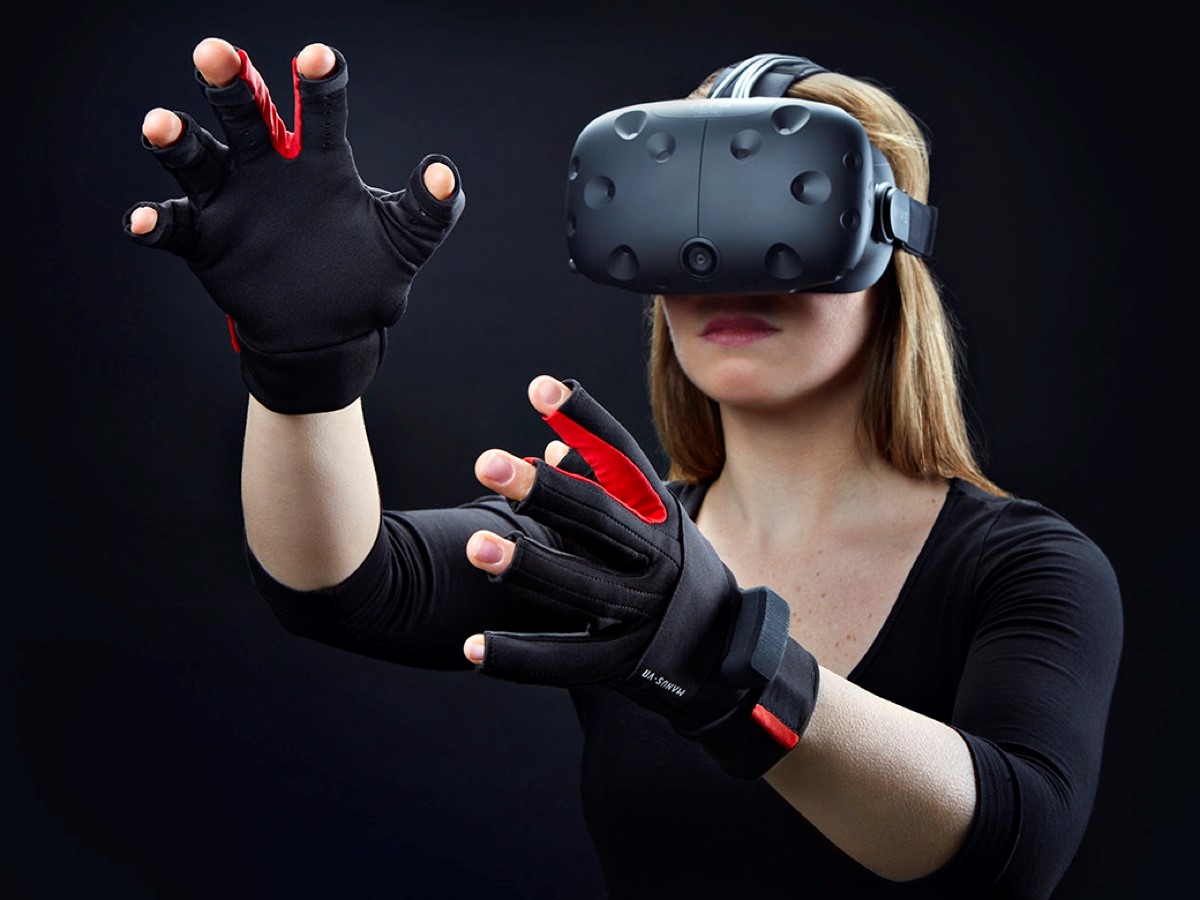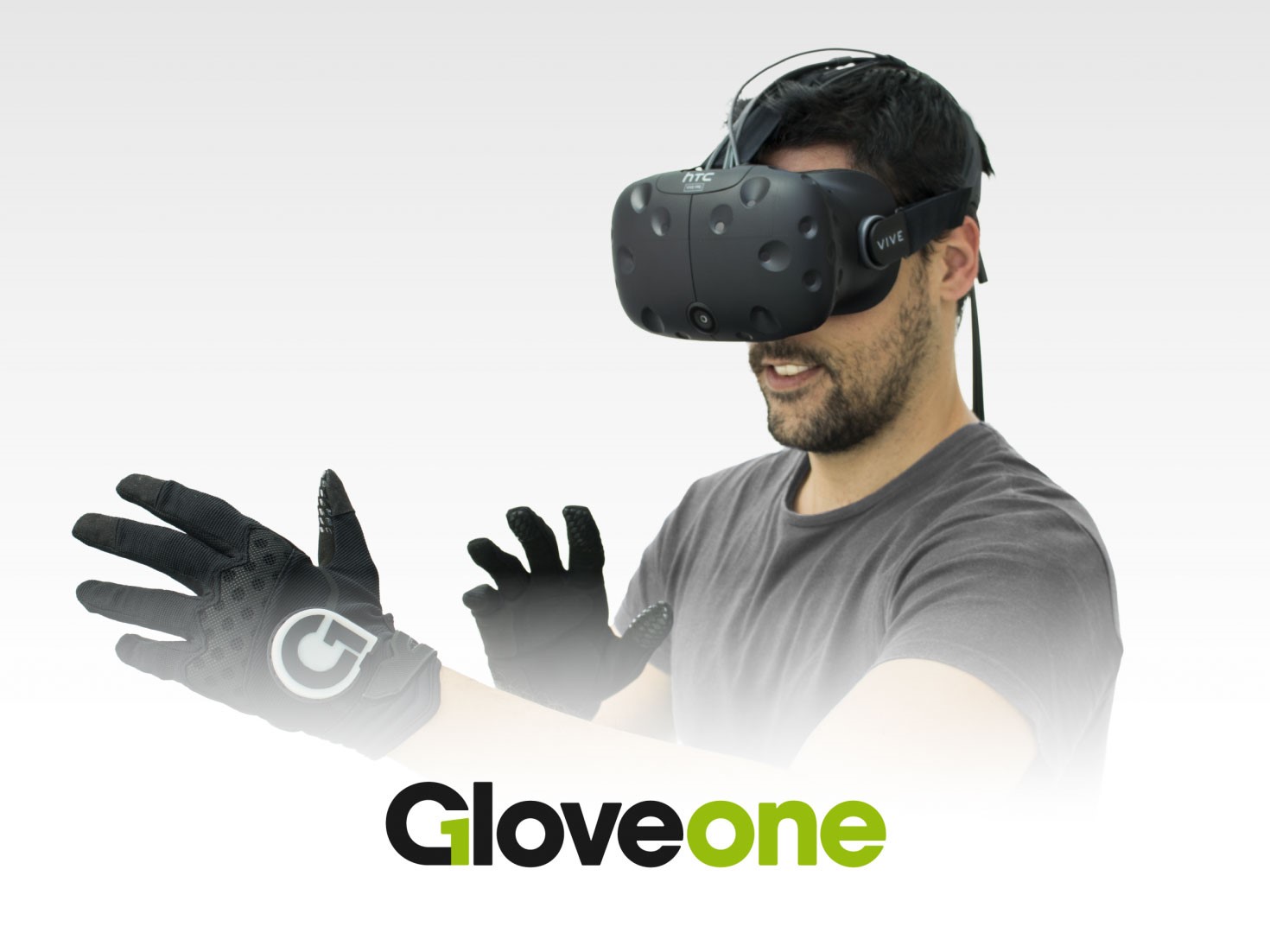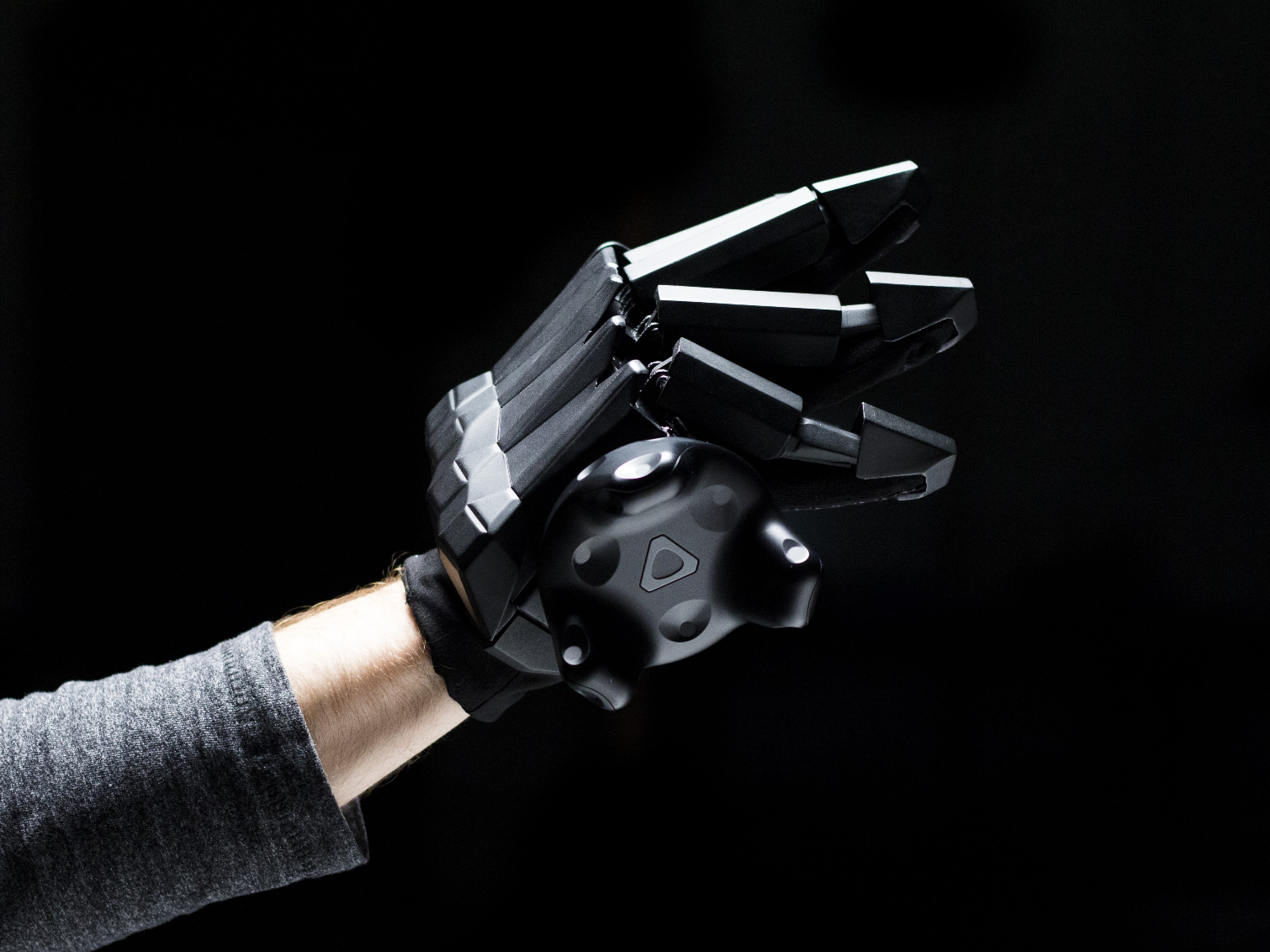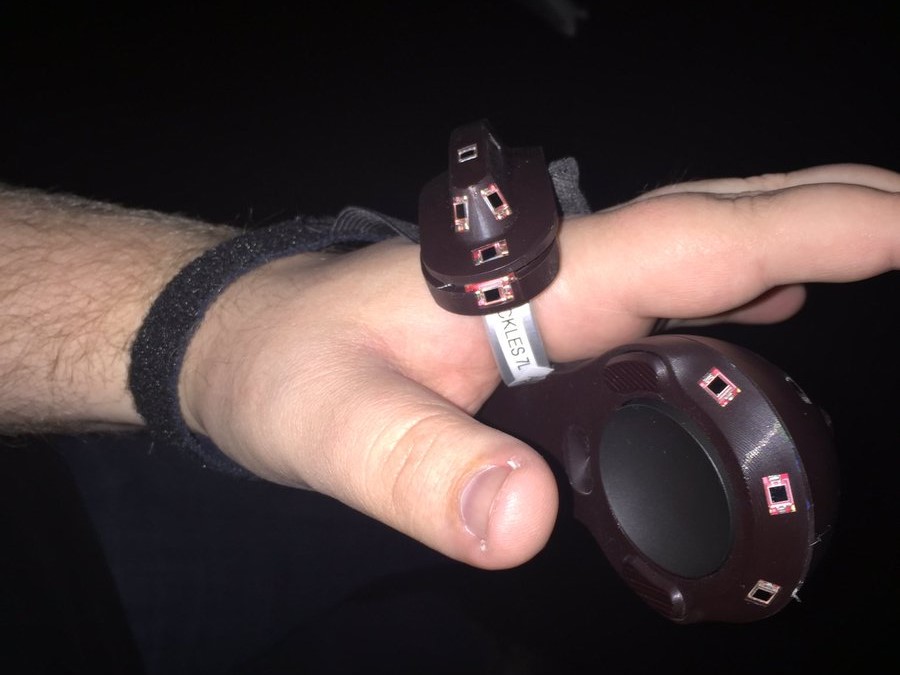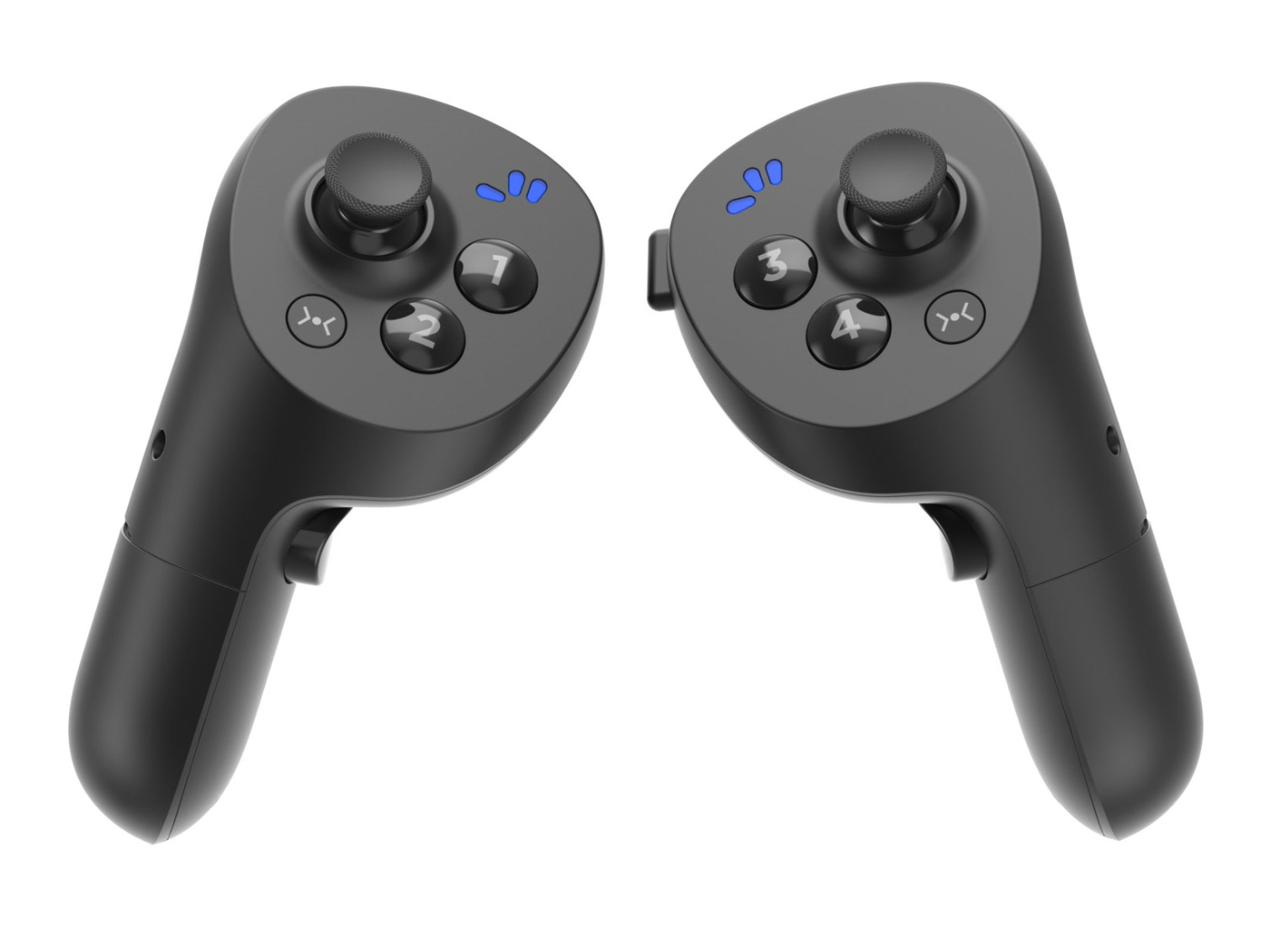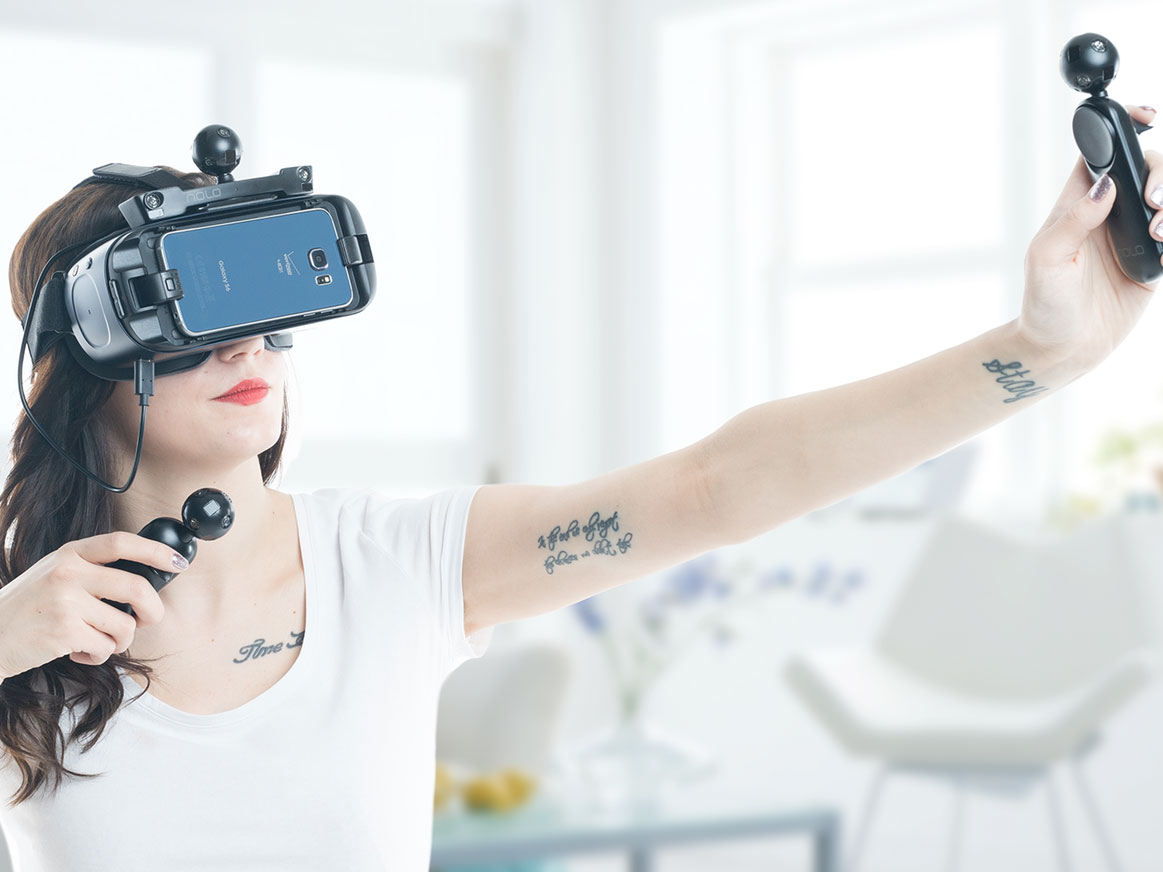Virtual Reality Peripherals And Accessories
Manus VR Gloves
Manus VR is developing a pair of tracked gloves for VR input that work with several optical tracking solutions. You can mount a Vive Tracker to a wrist strap to give the gloves Lighthouse tracking. We had the chance to try an early prototype of the Manus VR gloves before HTC revealed the Vive Tracker puck, which used Vive wands that would be strapped to the top of your hands. Manus VR also works with commercial-grade optical tracking systems from Xsens, OptiTrack, Phase Space, and Vicon. Manus VR does not currently support Oculus Constellation tracking.
The Manus VR gloves allow you to reach out and touch things in the virtual world with your real hands. The gloves include three 9DoF IMU modules in the thumb and one 9DoF IMU on the backside of the glove to track their orientation. The gloves also include programmable vibration motors to simulate tactile feedback.
MORE: Best Virtual Reality Headsets
MORE: Virtual Reality Basics
MORE: Oculus Rift Vs. HTC Vive Vs. Playstation VR
NeuroDigital Gloveone
NeuroDigital launched a Kickstarter in mid-2015 to bring a haptic feedback VR glove to the market. The campaign narrowly passed its funding goal, and the company had planned to ship the gloves by February 2016. To this day, NeuroDigital is still accepting pre-orders for the Gloveone peripheral, but it hasn’t shipped the developer kits to customers yet.
NeuroDigital’s Gloveone controller includes a 9DoF IMU sensor for orientation tracking and 10 vibration actuators to stimulate your senses when you touch things. NeuroDigital said the gloves could also simulate “the intensity of a virtual fire.”
Get Tom's Hardware's best news and in-depth reviews, straight to your inbox.
The Gloveone peripheral should be compatible with PC-connected and mobile VR systems.
MORE: Best Virtual Reality Headsets
MORE: Virtual Reality Basics
MORE: Oculus Rift Vs. HTC Vive Vs. Playstation VR
NeuroDigital Avatar VR
NeuroDigital is not only working on a glove peripheral; its Avatar VR system builds on the Gloveone hardware and brings full upper-body tracking to the mix.
The Avatar VR system features a tracked glove peripheral with tactile feedback (similar to the Gloveone hardware) as well as tracking devices for your forearms, biceps, and upper chest. The Avatar VR gloves also feature full finger tracking and include conductive zones that let you initiate actions by touching your fingers together.
MORE: Best Virtual Reality Headsets
MORE: Virtual Reality Basics
MORE: Oculus Rift Vs. HTC Vive Vs. Playstation VR
Noitom Hi5 VR Glove
The Noitom Hi5 VR Gloves are similar to the Manus VR gloves and feature six 9DoF IMU sensors for orientation tracking. Noitom also included a mount for the Vive Tracker universal tracking devices to provide optical tracking. The Hi5 VR Glove also works with Project Alice, the company’s B2B multi-user VR solution. Project Alice leverages the OptiTrack optical tracking system, and the Hi5 VR Gloves can be adapted with OptiTrack markers.
MORE: Best Virtual Reality Headsets
MORE: Virtual Reality Basics
MORE: Oculus Rift Vs. HTC Vive Vs. Playstation VR
VRgluv Haptic VR Gloves
Manus VR and perhaps NeuroDigital have worked out how to track your hands and fingers, and even add haptic feedback, but vibration motors don’t accurately replicate real-world interactions because there’s nothing stopping you from squeezing your fingers through a virtual object.
VRgluv’s engineers believe they’ve solved that tactical feedback problem with pressure sensitivity technology. The VRgluv peripheral features patent pending technology that pushes back on your finger tips to simulate grabbing onto objects. VRgluv’s technology allows for a range of pressure intensity, and you can attach a Vive wand controller, Vive Tracker, or Oculus Touch controller to provide spatial tracking.
MORE: Best Virtual Reality Headsets
MORE: Virtual Reality Basics
MORE: Oculus Rift Vs. HTC Vive Vs. Playstation VR
Dexta Robotics Dexmo
VRgluv isn’t the only company trying to solve the virtual touch problem. Dexta Robotics designed the Dexmo gloves--which it calls an exoskeleton for your hands--to bring tactical feedback to your fingertips in VR, too.
The Dexmo gloves are large and bulky, but they let you pick up virtual objects as if they were in your physical environment. Like the VRgluvs, the Dexmo gloves put pressure on your fingertips to simulate grasping onto things.
Dexta Robotics said the Dexmo gloves are suitable for education, gaming, training, and medical applications.
MORE: Best Virtual Reality Headsets
MORE: Virtual Reality Basics
MORE: Oculus Rift Vs. HTC Vive Vs. Playstation VR
Valve Knuckles Controller
Valve is developing a new controller for Steam VR called the Knuckles controller. Valve showed the controller privately to developers at the Steam Dev Days developer conference in late 2016, but it hasn’t shown the controllers to the press in great detail. Valve recently published developer documentation for the new peripheral and started shipping Knuckles controllers to devs.
Valve's Knuckles controllers let your open your hand to reach out and grab objects in the virtual world with your real fingers. You don’t have to hold the controller; it latches onto your hand. The controller includes capacitive sensors for your pinky, ring, and middle fingers. Developers are just now discovering what they can do with Knuckles, but the freedom to move all your digits without dropping your controller should open up many possibilities for interaction techniques.
Valve is working on three VR games that it plans to launch later this year. We expect that the Knuckles controllers will play a large role in at least one of those games.
MORE: Best Virtual Reality Headsets
MORE: Virtual Reality Basics
MORE: Oculus Rift Vs. HTC Vive Vs. Playstation VR
Finch Dash
The Dash from Finch VR is a 3DoF motion controller for mobile VR platforms. The controller includes a thumbstick with click motion, a home button and app button on the face, and a trigger for your index finger.
The Dash controller brings the functionality of Google’s Daydream controller to any Android or iOS smartphone VR device. The Finch Dash controllers aren't on the market yet, but Finch expects to ship the controllers in Q3. The company said the controller would carry a price tag between $20 and $30.
MORE: Best Virtual Reality Headsets
MORE: Virtual Reality Basics
MORE: Oculus Rift Vs. HTC Vive Vs. Playstation VR
Finch Shift
The Dash controller isn’t the only VR peripheral Finch VR is developing. At CES earlier this year, the company showed off the Finch Shift controllers, which bring full motion control to mobile VR platforms and are similar in design to the Vive wand and Oculus Touch motion controllers. The Shift controllers include dual triggers, a handful of face buttons, and top-mounted thumbsticks.
Finch’s motion controller technology doesn’t require any cameras. The kit includes a pair of arm bands that features sensors to keep track of its paired controller’s positions.
The Finch Shift controllers are available to developers now for $179. The company expects to ship the retail version before the end of the year, which would be cheaper than the developer kits. Finch VR said it expects to sell the Shift controllers for $100-150.
MORE: Best Virtual Reality Headsets
MORE: Virtual Reality Basics
MORE: Oculus Rift Vs. HTC Vive Vs. Playstation VR
NOLO VR
The Nolo VR system is a 6DoF motion controller set that works with mobile VR devices and PC-connected VR systems. It includes two motion controllers and a beacon for your HMD, as well as a base station to track them.
Nolo VR claims sub-2mm tracking accuracy and 20ms tracking latency, and it can tracking in spaces up to 13 x 13ft. The Nolo VR kit also includes third-party software that lets you play Steam VR games with your mobile VR system.
MORE: Best Virtual Reality Headsets
MORE: Virtual Reality Basics
Kevin Carbotte is a contributing writer for Tom's Hardware who primarily covers VR and AR hardware. He has been writing for us for more than four years.
-
AgentLozen This is quite a list you've put together. I think most of these devices need software support by developers to work properly. If no one makes software for them, they'll never really catch on.Reply
As I read through this list of peripherals, it reminded me of all of the devices for the NES back in the 80's that were never properly used. The Angry Video Game Nerd has covered many of them if you're curious. Any one of these could be the next Power Glove.
